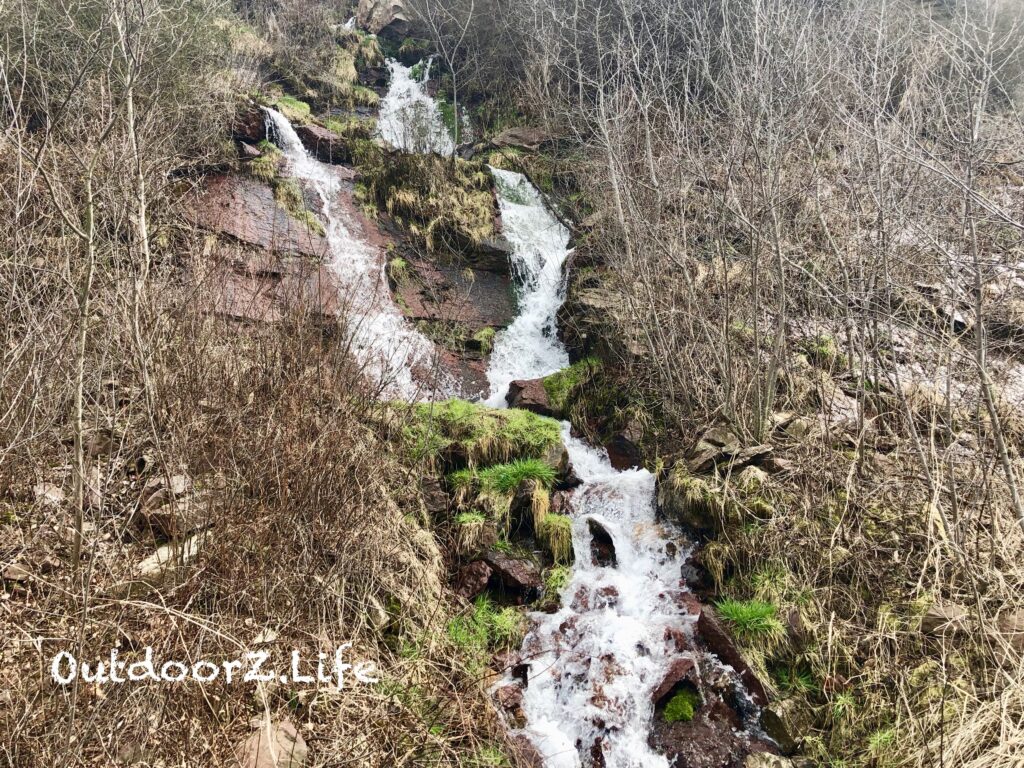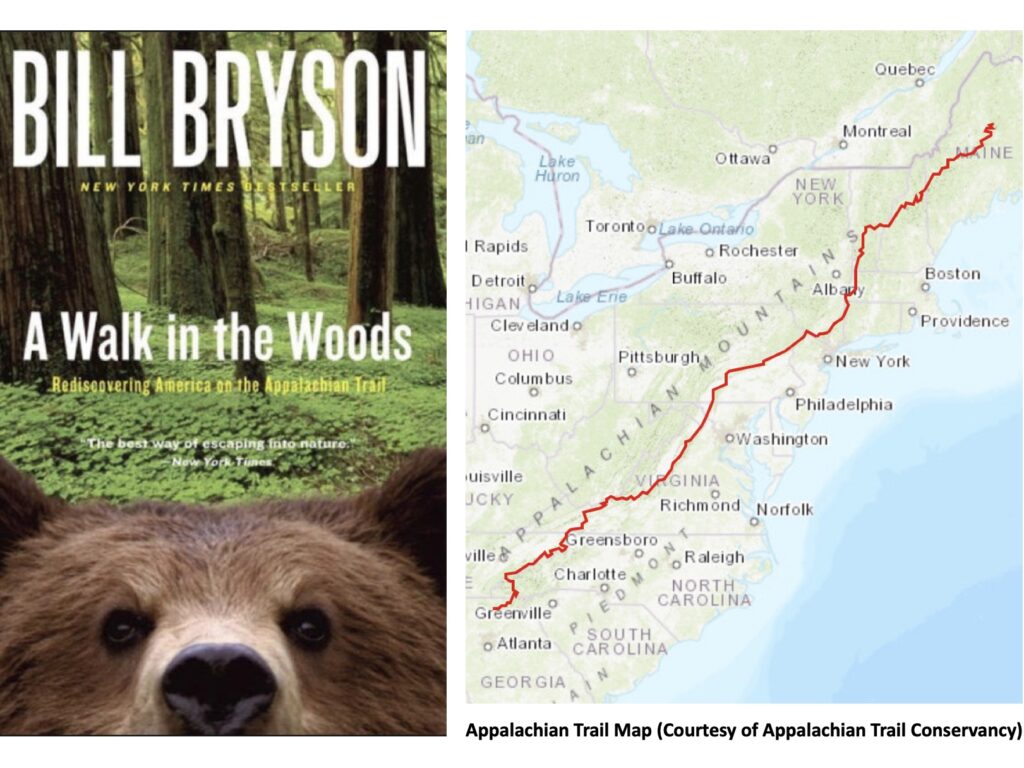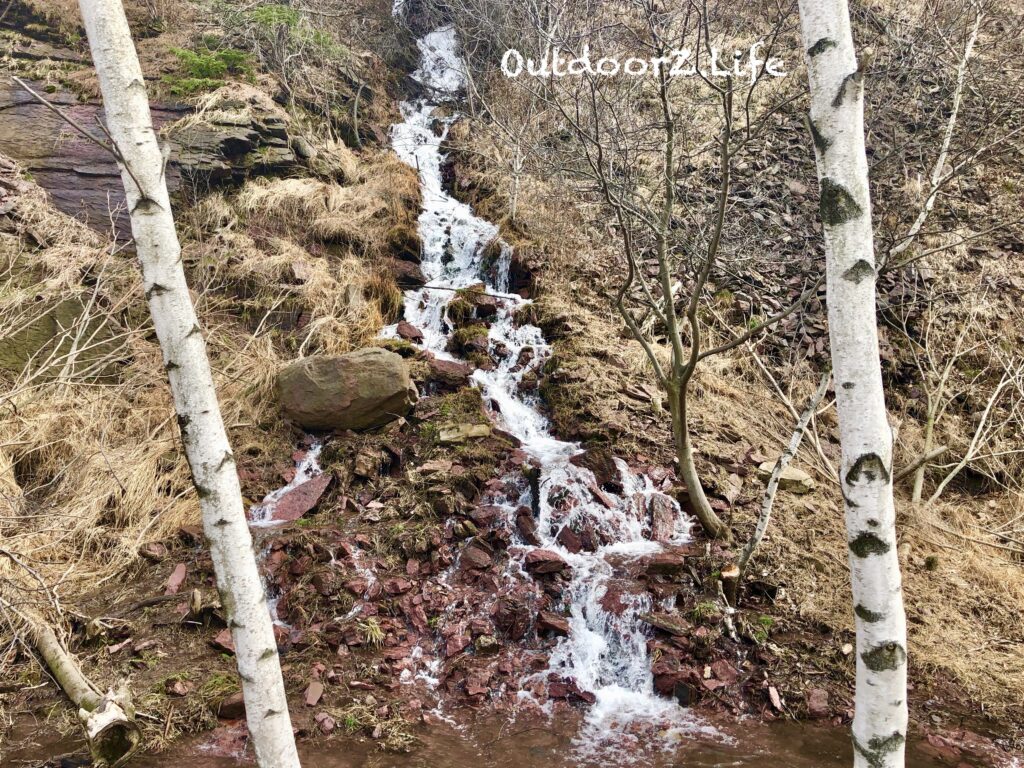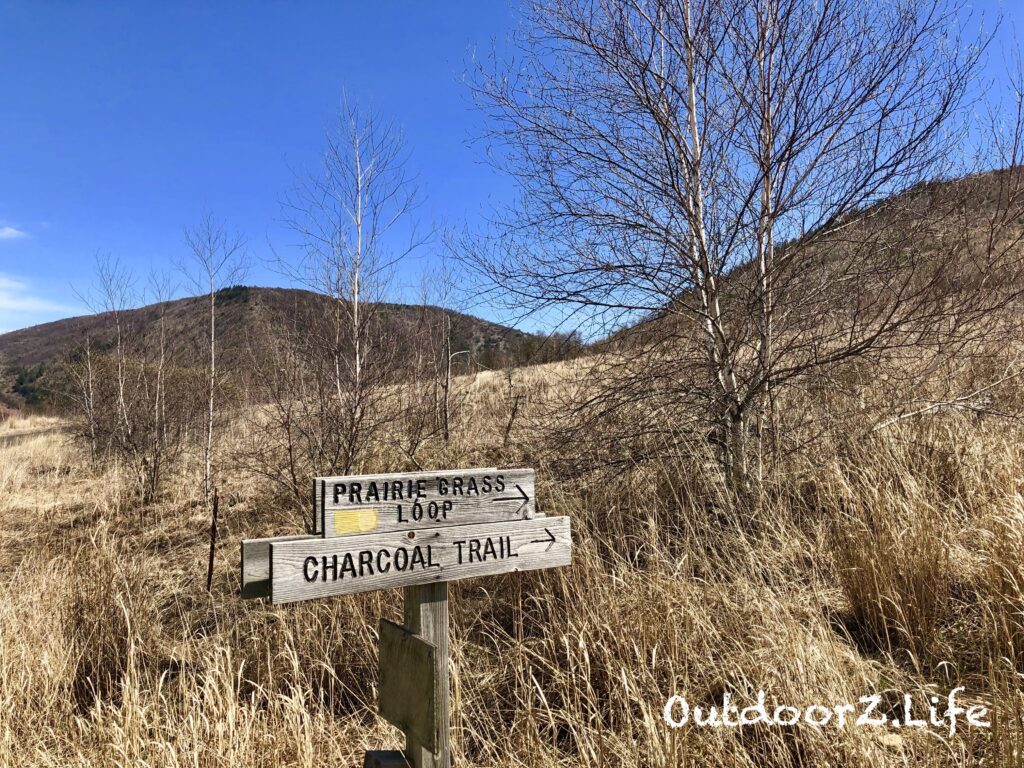One early Saturday morning in spring, my wife looked at me and asked, “Where should we hike today?” We discussed hiking around a local lake that we both enjoy visiting. Recently, we had completed our goal of hiking the six miles around this lake once each month for a year, so we decided to visit a place that was newer to us.

We chose the Lehigh Gap Nature Center in Slatington, PA for our hike; it is the location where I completed my first 10K Trail Race. This would be my wife’s first visit to the area. With our plan set, we grabbed our hiking boots, stocked our daypack, and picked up chicken sandwiches for the drive.
Our Plan
The plan was simple; we would hike and explore over 5 miles of trails. What we hadn’t expected was to see so many flowing waterfalls. I guess that I shouldn’t have been surprised since the nature center sits at the base of a mountain next to the Lehigh River and the region received heavy rains the previous night. These waterfalls added a nice bonus to our hike.
Years earlier, I had read about the unique story of the Lehigh Gap Nature Center (LGNC). “On the Kittatinny Ridge, by the Lehigh River, D&L and Appalachian Trails, LGNC is the only Superfund site in the country (US) to be restored to an environmental education center.” (Source: Lehigh Gap Nature Center website) This area was negatively impacted by industrial activity, most notably starting in 1898 when zinc smelting operations grew at the base of the mountain.
Bill Bryson and the Crazy Idea
Fortunately, over time we have learned more about the impact of pollution, and an increasing number of people value cleaner industrial activities that protect our natural resources. The result of the zinc operations left the mountains devoid of plant life and tainted with zinc, cadmium, and lead deposits. In fact, this section of the Appalachian Trail (AT) is mentioned in Bill Bryson’s book, A Walk in the Woods (published in 1998). Bryson writes about being questioned by a security guard who wondered why anyone would want to take a picture of this defoliated mountain range.

According to the LGNC website, restoration work began in the 1990s, but “it was LGNC’s novel approach of revegetating with native prairie grasses that successfully restored ecological function and beauty to a once-barren “moonscape.” I can confirm that the restoration work has transformed the area into a hiker’s destination. I would imagine that if Bill Bryson revisited this section of the AT, he would still take pictures…but for different reasons!

I wonder how many people thought that building a nature center on a Superfund site was a smart idea. I can only imagine the reactions of folks who first heard about this plan. What seemed like a crazy idea resulted in the healing of a mountain range.
Our Hike and Waterfalls
Who among us haven’t made mistakes and where would we be without second chances? My wife and I decided to spend our day at a place that is a symbol of redemption and second chances. Because of the stewardship of individuals, businesses, and government, the LGNC and surrounding area are recovering for all to enjoy.

We began our hike on the D & L Trail, which runs alongside the Lehigh River and then we started a partial-ascent of the mountain via the Bobolink Trail and then onto the Prairie Grass Trail. The Prairie Grass Trail hugs the side of the mountain before heading down to the LNE Trail. The Prairie Grass Trail, aptly named, provides a unique vantage point to the area’s restoration. While walking through mountain grasslands, a hiker can view the Lehigh River and the recovery work being completed by heavy equipment on the other side of the river.
We took a quick left on the LNE Trail and then entered the Three Ponds Trail as we proceeded down the mountain. Environmental research is being conducted at the ponds, and we noticed a sign that identifies the area as home to several endangered or threatened species. After viewing the ponds, we ended up back on the D & L trail for what we thought would be a walk back to the car with views of the Lehigh River.
While we did
On our walk back to the car, we picked up a brochure which pictures six waterfalls along this path. The brochure mentioned that railroad companies built pools similar to retention basins today, to hold the water back from eroding the mountain. It appears that these pools collect the water from the mountainside and funnel it out in one direction which creates better waterfall viewing for hikers.
Visit the Lehigh Gap Nature Center
If able, be sure to visit the Lehigh Gap Nature Center. The Osprey House Visitor Center has restrooms and is staffed with friendly folks who will help make your visit a positive experience. Learn about the area, enjoy the hiking trails, and take in the unique and stunning scenery. Our future plans include a return trip to hike up to the ridge and complete a loop on the North Trail and Appalachian Trail. We also hope to one day hike up the Appalachian Trail on the opposing mountain ridge (across the Lehigh River) to view the LGNC from a different vantage point.
Happy Trails!
By Charlie Anderson.
See where this story/article ranks: Top 10 List
Click here to see a short story: “10K Trail Run at the Lehigh Gap Nature Center“
